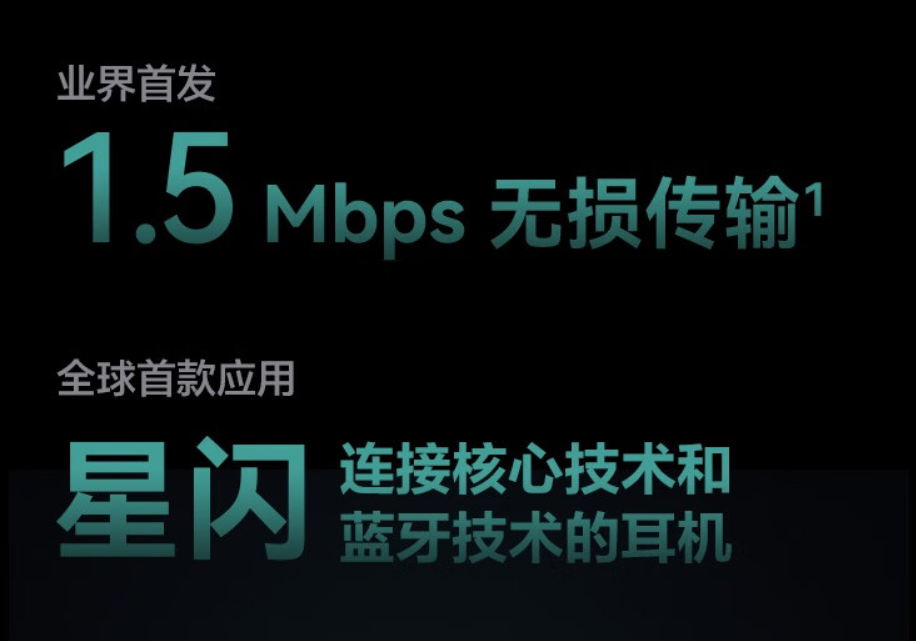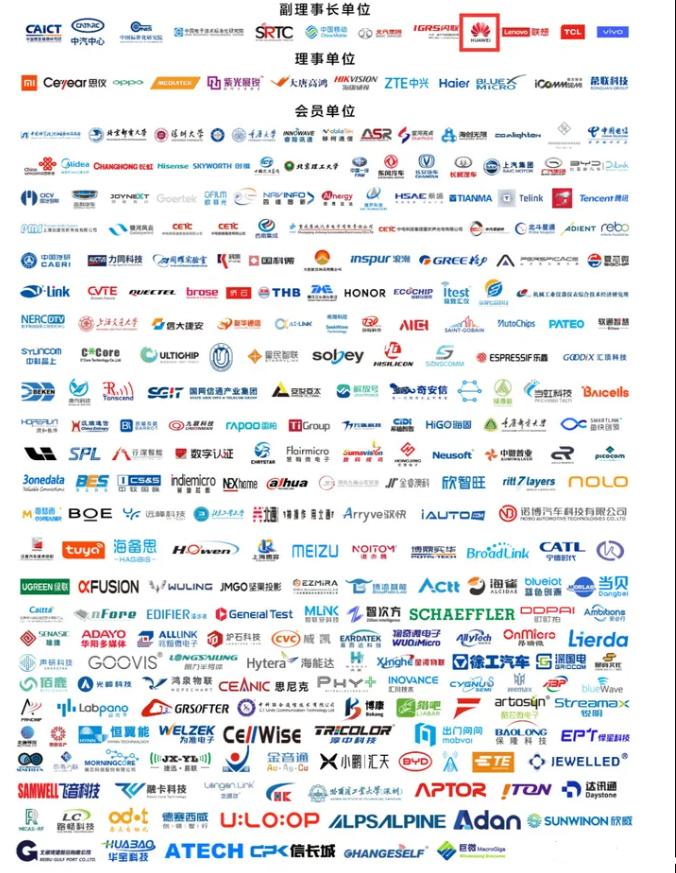Home >Hardware Tutorial >Hardware News >Huawei StarLight, wants to revolutionize Bluetooth?
Huawei StarLight, wants to revolutionize Bluetooth?
- WBOYWBOYWBOYWBOYWBOYWBOYWBOYWBOYWBOYWBOYWBOYWBOYWBforward
- 2024-01-11 21:51:191305browse
At a press conference some time ago, Huawei officially released a new generation of wireless connection technology - NearLink. Different from previous wireless technologies, NearLink is not developed based on the specifications of traditional wireless technologies such as Bluetooth. A new wireless connection specification created with years of accumulation of wireless technology.
If you didn’t watch the press conference, it doesn’t matter. Let’s take a quick look at StarLight: It uses a set of standards to combine the advantages of traditional wireless technologies such as Bluetooth and WIFI. This technology is suitable for consumer electronics, smart homes, New energy vehicles, industrial intelligent manufacturing and other scenarios. Compared with Bluetooth technology, the power consumption is reduced by 60%, the transmission rate is increased by 6 times, it has lower latency, more stable connection and anti-interference ability, the coverage distance is increased by 2 times, and the number of connections is increased by 10 times.
The above is the official explanation. From a technical point of view, the upper limit of each parameter of Star Flash is much higher than the current mainstream Bluetooth 5.3 protocol. Moreover, StarLight technology itself is compatible with a variety of wireless connection protocols, and the use of enhanced devices such as receivers can further improve latency and stability.
The wireless revolution has arrived
In recent years, wireless technology has become the main development direction of peripherals. From mice to keyboards, from headphones to speakers, wireless has become the main selling point of many new products. People are looking for ways to get rid of the shackles of cables and make their experience more free.
The surge in demand for wireless peripherals has also allowed the development of wireless technology to move forward rapidly. The miniaturization, low power consumption and high speed of wireless protocols such as Bluetooth to 2.4G are allowing us to get Better wireless connection experience. Take Qualcomm as an example. Its Snapdragon processor supports the proprietary Bluetooth transmission protocol, which can transmit data at a higher rate and stability, and easily complete the transmission of lossless music on wireless devices such as headphones.
In addition, audio manufacturers such as Sony are also developing their own wireless protocols. Protocols such as LHDC and LDAC have been popular in recent years. However, these protocols are all developed based on the Bluetooth specification, but use different coding logic to further increase the transmission bandwidth.
Star Flash is different. It provides the bottom layer of two connection technologies, SLE and SLB, and uses a new Polar code for protocol compilation. This new encoding system is far more efficient than the encoding system used by Bluetooth. , achieving transmission performance infinitely close to the channel limit.

Photo source: Star Flash
The technical indicators of Star Flash are also very exaggerated, with a delay of less than 20 microseconds. (The current mainstream wireless technology delay is generally at least 1 millisecond, which is 50 times that of Star Flash), multi-point synchronization accuracy is less than 1 microsecond, reliability is greater than 99.999% (under 20dB random burst interference), single-stream peak spectral efficiency Greater than 5bps/Hz.
Behind the amazing technical indicators, the core is the complete reconstruction of wireless technology. Compared with traditional Bluetooth technology, Star Flash is more like a variant of 5G technology. It has many 5G characteristics, but It has been greatly simplified, and you can think of it as a specialized 5G technology that also incorporates some Wi-Fi technology into it.
Compared with all current mainstream wireless protocols, even the latest Apple enhanced Bluetooth patent is lower than Star Flash in terms of bandwidth, latency, etc. Moreover, based on two different wireless bottom layers, Star Flash’s bandwidth The lower limit is extremely large and can reach 100kbps~12Mbps. For comparison, Apple's is 1Mbps~8Mbps. The flexible channel design allows StarLight to run at very low power according to the needs of the device, improving the battery life or reducing the size of small wireless devices.
It can be said that StarLight has all our current requirements for wireless technology, such as low power consumption, low latency, high bandwidth, etc. In my opinion, StarLand ecosystem has the opportunity to become the Chinese version of 3GPP or The IEEE Alliance allows us to gain more say in the understanding of wireless communications.
What is the current market performance of Star Flash Technology?
The commercial prospects of Star Flash
In a short period of time after the release of Star Flash, three peripherals equipped with Star Flash technology have been launched in China, namely Thor, VGN and Da Mosha is an emerging force in the field of peripherals. Its products are mainly aimed at professional gamers and have extremely high requirements for performance.
In their promotional page, we can also more intuitively see the current performance of StarLight technology on actual products. Taking Raytheon's products as an example, the technical parameters given are more than 2 times Anti-interference capability, the wireless mode delay is as low as 250 microseconds, and the wired mode is as low as 125 microseconds. The wireless mode supports a 4K Hz polling rate, and the wired mode supports an 8K Hz polling rate.

Source: JD
What are the concepts of these parameters? To put it simply, it is equivalent to directly making the product performance indicators of these emerging peripheral brands equal to the top products of the world's first-class peripheral manufacturers. Among the current mainstream peripheral brands, Razer has made the fastest progress in wireless technology. The new generation Viper v3 professional version also supports up to 4K Hz wireless mode and does not support 8K Hz wired mode. Moreover, the 4K Hz mode needs to be separated separately. Purchase an independent adapter base. As a comparison, mice from brands such as Thor that use StarLight technology only require a Nano receiver.
A higher polling rate can make the positioning of the mouse more detailed and accurate during operation, maximizing player skills. Mouse with high polling rate has always been the favorite of professional players. Before this, top peripherals have always been reserved for big international brands such as Logitech, but after the release of StarLight, this market may undergo some changes.
The attempt in the mouse market is just the beginning. The advantages of Starlight technology in the audio and video field are actually more significant. Compared with peripherals such as mice and keyboards, headphones need to transmit far more data in one second than ordinary ones. Peripherals, so the advantages of high bandwidth will be more obvious. Even mini wireless headsets such as TWS headsets, using StarLight technology, can achieve a real-time 1.5Mbps transmission rate without additional adapters and have extremely low latency.

Photo source: Huawei
As the quality of music streaming media becomes higher and higher (QQ Music, etc. have (can provide mastering-level sound quality), which also puts forward higher requirements for the transmission bandwidth of headphones. Only high-bandwidth wireless protocols can meet the transmission of high-quality music and bring users a better music experience.
Moreover, using StarLight technology, you can easily build an ultra-low-latency wireless sound system, solving the current problems of difficulty in building mid-to-low-end wireless home theaters, weak anti-interference ability, and high latency. If it is just the upgrade of the audio system, the revolution brought by it is secondary. The biggest change is actually in the field of wireless screen projection.
The current wireless screen projection technology, except for a few point-to-point millimeter wave screen projections, most other types of screen projection have obvious delays and poor anti-interference capabilities. Starlight technology uses With the advantage of high transmission rate, remote screen projection with 4K resolution can be easily completed, and the anti-interference performance is significantly better than traditional WiFi screen projection.
To some extent, the technical specifications of Star Flash are very close to the next generation Bluetooth 7.0 being developed by the Bluetooth Alliance. However, Star Flash is now commercially available, while Bluetooth 6.0 is still not available. Stay in beta. More than 100 domestic companies have joined the StarLight Alliance. As a global electronics manufacturing center, Chinese companies have a large say in the electronic digital field and will become the main force in promoting StarLight in the future.

Photo source: Star Flash
The above is the detailed content of Huawei StarLight, wants to revolutionize Bluetooth?. For more information, please follow other related articles on the PHP Chinese website!

